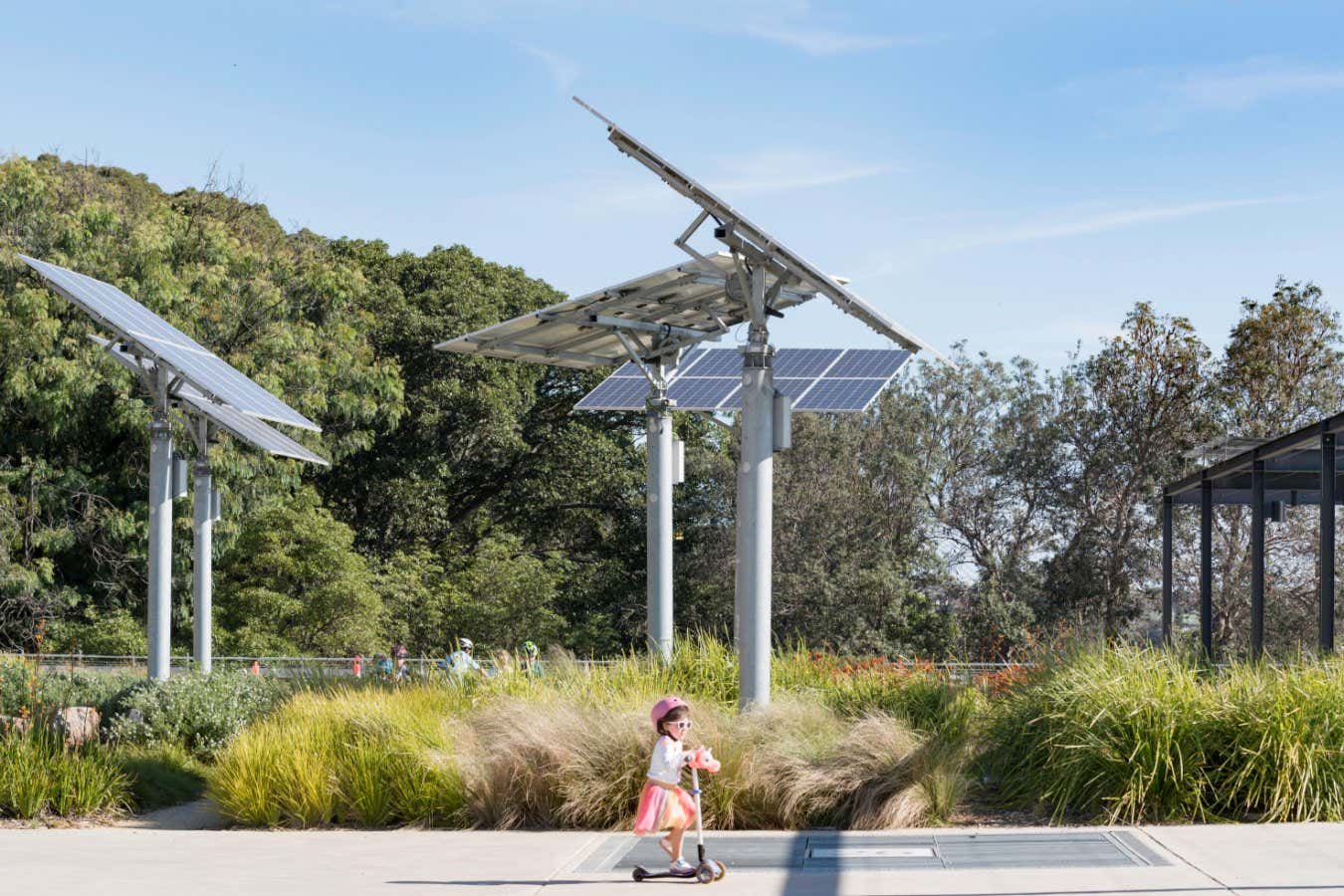
Solar panels in Sydney, Australia
Stephen Dwyer/Alamy
Australians received a welcome surprise this week with the news that every household will soon receive three hours of free electricity every day, as part of a world-first initiative to share the benefits of solar power. If successful, it could be a model for the rest of the world to follow in a future that will increasingly be powered by sunshine.
The Australian electricity grid is zinging with excess capacity during the day thanks to solar power, but strained at night by the fact that sunshine is out of whack with when people return from work and use most of their appliances. To address this, the Australian government says its “Solar Sharer” scheme will first be rolled out from July 2026 in three states – New South Wales, South Australia and the south-east corner of Queensland – with the rest of the country joining in 2027.
Australia is already leading the world in solar deployment, with the installation of 42 GW of solar capacity, equivalent to more than 1500 watts per person and about five times the global average, says Bin Lu at the Australian National University in Canberra. Another 40 GW of new renewable capacity will be installed by 2030.
“As a result, there’s abundant solar power injecting into the grid in the middle of the day,” Lu says. “If it isn’t effectively used, it’ll simply be wasted.”
But while four million Australian households have their own solar panels, the vast majority of which feed into the grid, people who live in apartments or simply can’t afford an installation are locked out – something this new policy solves, says Marnie Shaw, at the Australian National University, Canberra
“It gives everybody access to solar power in a very simple way,” she says. “You don’t need to buy a share in a solar farm. You don’t need a battery. You just use the solar power that’s already being produced by others. When you’re using power in the middle of the day you’ll be using the excess power produced by your neighbour’s rooftop solar.”
The idea for offering consumers cheaper or even free power is not entirely new – several Australian power suppliers already have similar schemes that operate at certain times of excess renewable energy, as do many in European countries. What makes the Solar Sharer scheme unprecedented is its scale and blanket implementation, led by a national government, instead of industry.
Some wonder, though, whether the new policy will work in practice or turn out to be a devilishly complex social experiment that risks introducing some perverse outcomes. For example, Dylan McConnell at the University of New South Wales says the policy may disincentivise new solar installations.
“You sharpen your pencil and start doing the calculations when you’re thinking about putting solar on your house,” McConnell says. “Then someone says ‘hey its free power for three hours in the middle of the day’, you might reconsider that decision.”
He says some people might instead buy a battery and use the free power to charge that up. Others might be upset because the expensive solar system they have just installed no longer has the same value proposition. Administering the policy will also prove complex, and the government will need to make sure that electricity suppliers don’t simply hike the price at other times to compensate for the free hours, says McConnell.
Another unknown is what would happen if there is a lengthy run of bad weather, says Alexandr Akimov, at Griffith University Gold Coast, Australia. “There is a risk that during rainy days,” he says, “particularly when wide weather fronts cover the eastern states that high daytime consumption combined with low solar generation could lead to spikes in daytime grid demand.”
Because Australia is so advanced in its solar journey, its policies will be widely watched by other countries. Glenn Platt at the University of Sydney, Australia, says that as other nations get deeper into their solar rollout journeys they will “definitely” have to confront some of the same issues.
The big question, he says, is whether householders will actually change their ways as a result of the free power and move some of their energy intensive habits like washing and drying clothes to the middle of the day. Evidence from existing free schemes in Australia is that shifting behaviours can be very difficult, especially for energy intensive heating and cooling. The greatest potential beneficiaries of free electricity are lower income earners, but these are also the people least likely to own the smart appliances needed to take advantage of the free power in the middle of the day.
“It means huge change and we’re assuming that energy consumers will do certain things,” Platt says. “It’s less about the electrons and the dollars and more about the social experiment, much more about the behavioural change.”
Topics: